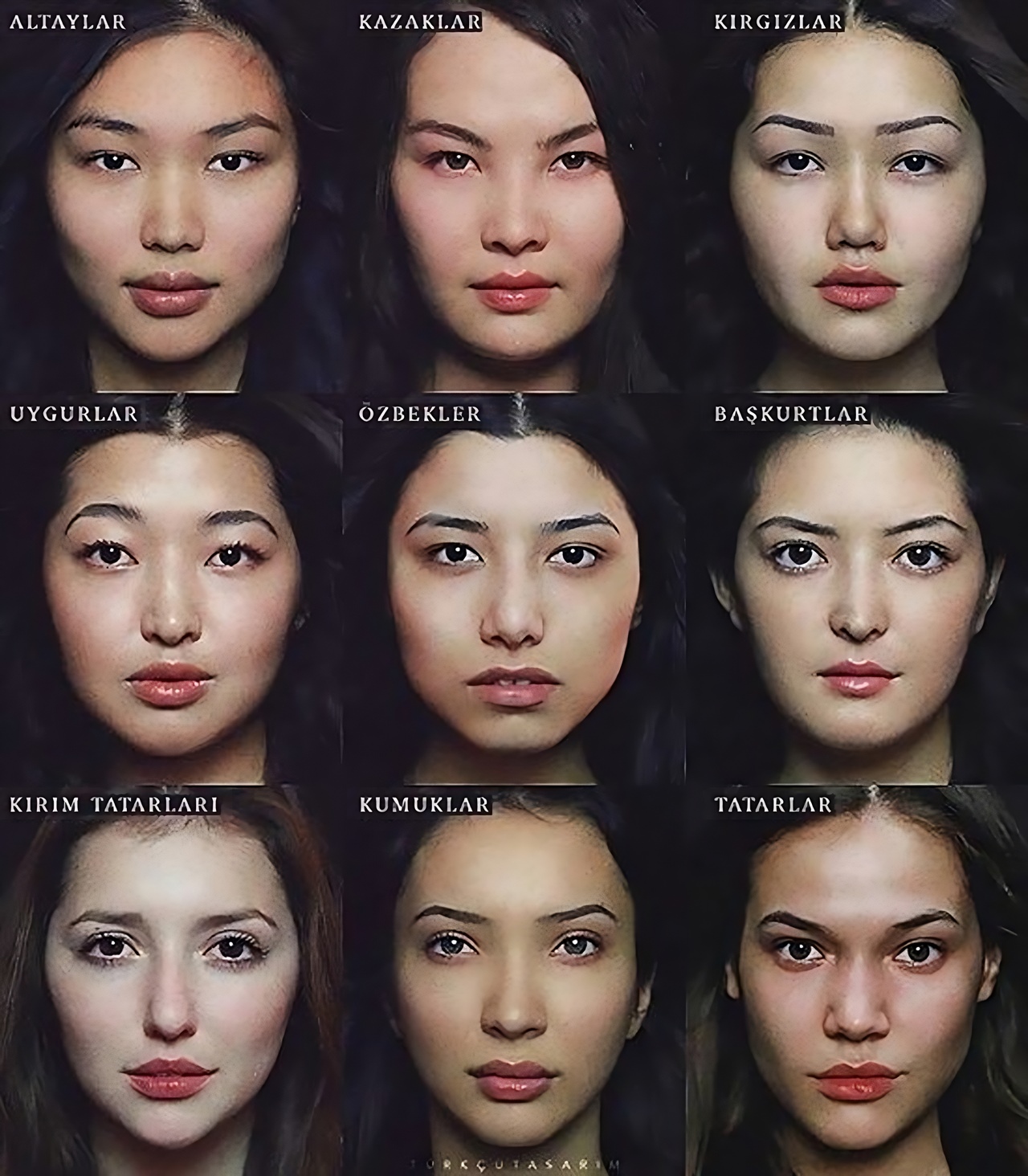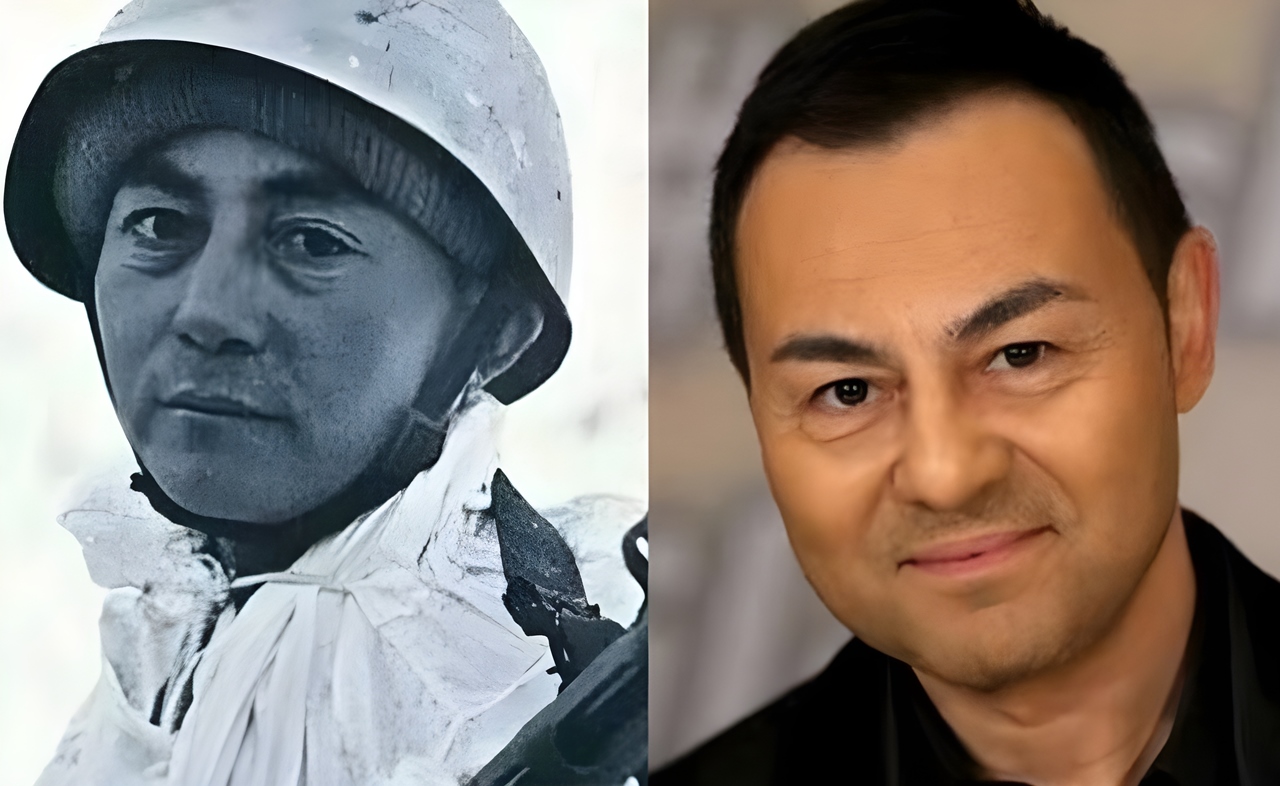There is an issue that bothers all of us and drives us to investigate. All of the Turks who spread from the wide geography of Central Asia to different regions; Why aren’t the Kyrgyz, Uzbek or Kazakh Turks with slanted eyes?
You may have noticed that many Turks have slanted eyes, even though they do not live in Turkey. In Turkey, on the contrary, large and big eyes are the majority.
ours not having slanted eyes, It appears like a genetic riddle. So, why were our ancestors so shy about having slanted eyes while feeling the wind of Central Asia in their hair? It is time to open the scientific curtains behind this mysterious question.
Understanding the genetic and physical characteristics behind the Turks’ emergence from Central Asia and spread to different geographies actually illuminates a great field of scientific discovery.
First of all, let’s start by stating that the name Turk does not represent a race, it almost represents a large family. Turks are grouped into two main groups, Oghuz and Kipchak, and this distinction is often called East-West Turkism. Anatolian Turks are also Oghuz Turks It falls into the category and this group is based in the Transoxiana region of Central Asia.
Another group of Kipchak Turks includes Eastern Turks such as Kazakhs, Uzbeks and Kyrgyz. Although these two Turkish groups share the same culture and language, there are significant genetic differences. After the Gokturks completely conquered Central Asia, these two groups were It was given the name Turk.
Why Turks do not have slanted eye genetics has always remained a mystery in the scientific world.

Turkmens
genetic diversity, Understanding how Turkish communities were shaped as they spread to different geographies is important in finding the answer to this question. Nomadic lifestyle, interaction with different cultures and intermarriages with local people have diversified the genetic structure of Turks over time. But this is considered a secondary cause.
Population of Oghuz Turks, Seljuks Cynic with the westward migrations carried out by the tribe and with the Mongol invasion big It decreased significantly in the Transoxiana region. Today, they mostly live in Turkmenistan. For this reason, the Oghuz Turks remaining in Central Asia today are very few.

Although Oghuz and Kipchak Turks have the same language and culture, they are genetically different from each other. Kipchaks have highly slanted eyes and are not purebred. Because over time, they interacted with the Mongols and the Chinese. Since the Transoxiana region of the Oghuzs was not similar to the Asian steppes, Oghuz people generally have slanted eyes. It is not expected to happen.
However, when compared to today’s Anatolian Turks, we can notice that they were a little more slanted-eyed. The main reason for this situation is the genetic interaction that has been going on for centuries. This diversity may reduce the likelihood of slanted eyes occurring It may also include genetic combinations.
Genetic research and anthropology; It can understand whether Turks carry genetic traits related to slanted eyes in their genetic codes.

Kyrgyz Turks
However, this situation; It requires focusing not only on genetic factors but also on cultural interactions and historical processes. Some genetic studies have shown that Turks have a genetically diverse structure. Nomadic lifestyles and encounters with different tribes throughout history, It increased the genetic diversity of the Turks.
However, it is unclear whether this diversity can be directly associated with slanted eyes. It is difficult to draw a clear conclusion. Even in our country today, more than half of the people have the slanted eye gene, but none of us can see it, perhaps because we do not look carefully.
When we look at the slanted-eyed gene, it is considered a complex feature. Well resulting from the interaction of more than one gene The fact that it is an emerging feature complicates research on this subject. This genetic feature still remains a puzzle for scientists studying the genetic history of Turks.
It is difficult to give a single explanation to the issue because of the interaction of migrations, various cultural interactions and genetic code factors.

slanted eyes Characteristics such as these arise as a result of the interaction of multiple genes in the genetic structure, and these genetic combinations are shaped in a complex way. However genetic and phenotypic characteristics Because of such a complex interaction, it is very difficult to give a definitive explanation as to why a particular genotype does not reveal a particular phenotype.
Genetic diversity is also observed in communities of Central Asian origin, such as the Kyrgyz and Turkmens. In these communities, distinctive features such as slanted eyes may vary between individuals. Research on genetic traits also addresses specific subgroups rather than being generalizing.
Well genetic structure and physical characteristics may differ between individuals and subgroups. Therefore, characteristics such as slanted eyes may be seen among individuals in communities living in Central Asia, such as Kyrgyz and Turkmens.

Today Oghuz Turks; It lives in Türkiye, Turkmenistan, Iran and Azerbaijan. Kipchak Turks are a very small minority in our country. Even though both groups have the same language and culture, their genetic differences are high. That’s why we, Anatolian Turks, do not have slanted eyes.
RELATED NEWS
The Event That Causes Us to Mistake People with Slanted Eyes as ‘Chinese’: Outgroup Homogeneity Effect
RELATED NEWS
The Concept That Explains Why We Like the Japanese, Koreans and Chinese to Each Other: The Cross-Racial Effect
RELATED NEWS
